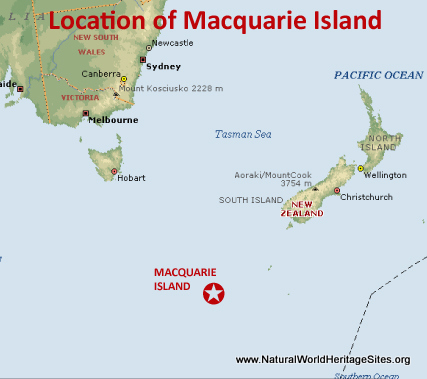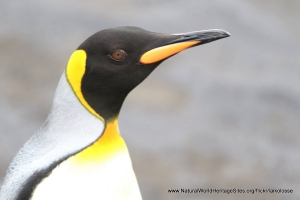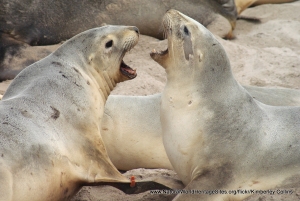EXPLORE Macquarie Island with this slideshow, check the location map and get all the facts and information below.
For slideshow description see right or scroll down (mobile). Slideshow loads automatically (this may take a few seconds to start)
Location and Values: Macquarie Island is located in a very remote part of the southern oceans, half-way between Australia and Antarctica. It provides major geological interest, as the only place on Earth where rocks from the earth’s mantle (6km below its crust at the ocean floor) are being actively exposed above sea level. This is happening along the undersea Macquarie Ridge where the Indo-Australian tectonic plate meets the Pacific plate, with Macquarie Island (34 x 5 km) being the only exposed part of the crest. The island is still seismically active with frequent earthquakes and landslides as the geological processes continue. The rock exposures on Macquarie Island are remarkable for their lack of deformation and the clarity of the rock sequences from all levels down to 6km below the ocean floor crust.
In addition to Macquarie Island’s outstanding geological features, it is recognised on the world heritage list for its wild natural beauty and its phenomenal concentrations of marine life. The vast majority of the site (5,272 km2, 97.7% of its total area) falls within a marine reserve that protects the ocean around the island, supporting some 100,000 seals and 3-4 million penguins. A breeding population of 850,000 pairs of endemic Royal Penguins is one of the greatest congregations of seabirds in the world, while king penguins, four species of albatross and elephant seals are other prominent members of the rich wildlife community.
Conservation Status and Prospects. According to IUCN’s Conservation Outlook Assessment (2020) the conservation status of Macquarie Island is ‘good, with some concerns’. In general, the geological values of the site remain intact, and the status of its biological attributes is improving following historical exploitation and more recent impacts of alien species. Programmes to eliminate introduced species have been ongoing for several decades, starting with eradication of the weka (a flightless bird from New Zealand), and cats (which were successfully eradicated by 2000). More recently a successful pest eradication project to eliminate rabbits, rats and mice from the island has been completed and this has led to recovery of the vegetation and populations of breeding seabirds. However, there remains some concern over the unexplained die-back of cushion plants and continued decline of elephant seal populations. Climate change is an all-pervasive threat, with unknown potential long-term consequences for conservation of the site’s biological values.
Links:
Google Earth
Official UNESCO Site Details
IUCN Conservation Outlook
UNEP-WCMC Site Description
Birdlife IBA
Slideshow description
The slideshow illustrates some of the main wildlife species of Macquarie Island with a portfolio of photos by Kimberley Collins. The island lies in latitudes known as the ‘Furious Fifties’, where strong winds and stormy seas often obscure views of the island’s wider landscapes, so the slideshow provides more intimate portraits of some of the prominent species – elephant seals as well as Royal, King and Gentoo penguins with other birds such as skuas and giant petrel.
Factfile
Website Categories:
Islands;
Earth Features
Area: 5,573 km2
Inscribed: 1997
UNESCO Criteria:
- Exceptional natural phenomenon (vii);
- Outstanding natural beauty (vii);
- Geological features (viii)





